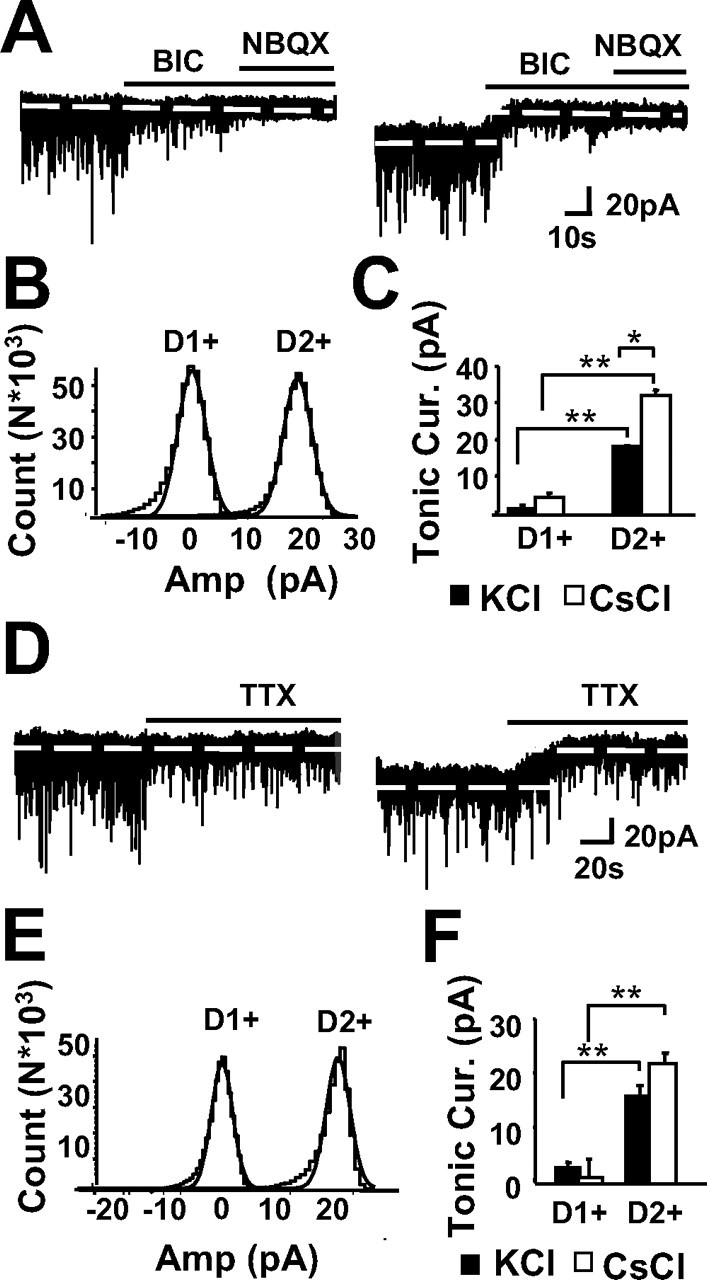Figure 2.

D2+ MSNs demonstrate larger GABAA receptor-mediated tonic currents than D1+ MSNs. A, Representative traces from a D1+ MSN (left) and a D2+ MSN (right) demonstrate that BIC (25 μm) blocked sIPSCs in both cell types but only revealed an endogenous GABA-mediated tonic current in the D2+ MSN. The remaining sEPSCs in both cell types were blocked by NBQX (5 μm) with no effects on the tonic current. B, The mean of the baseline current during BIC application from the representative traces in A were adjusted to 0, and the amplitude distributions were drawn from segments immediately preceding BIC application. The non-skewed sides of the amplitude histograms were fit with a Gaussian, the peak of which was used to determine the absolute magnitude of tonic current blocked by BIC. C, Summary of tonic currents blocked by BIC (25 μm) with KCl internal (black bars; n = 23 and 44) and with CsCl internal (white bars; n = 7 and 9) in D1+ and D2+ MSNs, respectively. D, Representative traces from a D1+ MSN (left) and a D2+ MSN (right) demonstrate that blockade of voltage-gated Na+ channels with TTX (0.5 μm) reduces the frequency and amplitude of postsynaptic events in both cell types but only alters the amount of holding current required to maintain the holding voltage at −60 mV in the D2+ MSN. E, Amplitude distributions representing the tonic current abolished by TTX, drawn from segments in D as described above for BIC (B). F, Summary of tonic current blocked by TTX (0.5 μm) from recordings with KCl internal (black bars; n = 11 and 32) and with CsCl internal (white bars; n = 6 and 7) in D1+ and D2+ MSNs, respectively.
